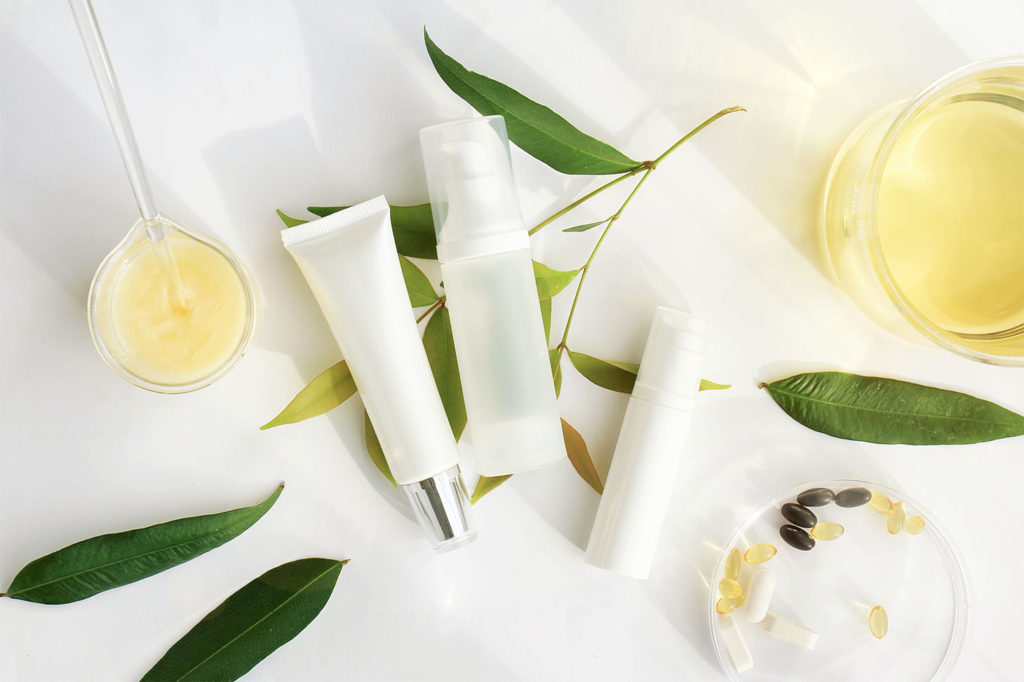I’ve seen enough ‘shelfies’ to last a lifetime and one thing I’m always amazed with is how MANY products beauty bloggers and skin care journalists have. I know they get sent a lot free but as you know I cannot abide a routine with 20 steps and they seem to actively encourage this. So before I tell you what products you do need let me help you with what you can throw out.
- EXPIRED PRODUCTS
On every package that you buy there is a little graphic of an open pot and a number followed by an M (a PAO icon) that tells you how long the product will last once it is open. If you only use three products then you’ll definitely get through them but if you use 200 then most of them will go bad/lose their effectiveness in this timescale.
The number before the M tells you how many months it is good for after opening.
Go through your cupboards and throw out anything that you think you have had for longer than the sticker suggests. In future write the date on the packet when you open it so that you’ll know when it’s no good.
Expired products are less effective, less potent and more likely to cause infection and irritation. In fact the expired products may even be causing your skin’s problems. Liquid products and those that are emollients are much more likely to go bad than powders.
If you can’t find the PAO sticker it might have been on the box so here are some tips on how to tell when something might have gone bad
- If the mixture has changed quality since you opened it (more streaky, more grainy, more lumpy) chuck it out
- If the liquids have started to separate
- If the product has changed smell
- If the product has changed colour since you opened it
Also be very careful with ‘preservative free’ products. They will go bad much faster than others so make sure you check these.
If you can’t find the PAO and the product looks ok here are some vague guidelines as to how long these products generally last
Cleansers – 1 year
Acid exfoliant – 1 years Facial body moisturisers and serums – 6 months to a year How can you help your products last longer:
- Don’t put dirty hands in the pot – avoid products stored in jars
- Make sure the lid is on properly
- Don’t store them in direct sunlight
- Note the date you opened on the bottle
- Don’t share you makeup or skincare products
2. THE PHYSICAL EXFOLIATOR
Firstly they’re just bad. They’re bad for your skin, bad for the environment, just plain bad bad BAD.
The face on your skin is relatively sensitive and thin and it does not need to be scrubbed with a Brillo pad to get clean or to have effective exfoliation. Most over the counter exfoliants contain irregular particles that can cause micro tears of the skin and make you more susceptible to infection as well as causing unnecessary inflammation.
They also don’t contain any active ingredients. These are ingredients that are able to penetrate the skin barrier and work on the deeper layers of the skin to improve its texture, tone and brightness. If you’re even bothering to go through a cleansing ritual you want to make sure that every product is working FOR your skin not against it.
If you use a device to clean your face, either Foreo or Clarisonic then these will be doing a good amount of exfoliation already. Even a flannel will act as an exfoliant. But the other reason they are not a good idea is because there is a much better alternative available in the form of chemical exfoliation.
A chemical exfoliant contains acids (AHA’s of BHA’s) which work on the links between skin cells breaking them down and GENTLY allowing them to be removed and turned over. So there’s no need to scrub your skin or damage it to remove dead skin cells and brighten your complexion.
3. TONER
So this might be a little controversial but I personally don’t feel that toner is required at all. Especially if it is an old school toner that you’ve bought from Boots or the supermarket
Traditionally toners were used as a way of getting all the dirt off your face after cleansing. I’d argue that if you’ve still got dirt on your face after cleansing then you’re either not cleansing properly or you need a better cleanser. They were also used to balance the pH of the skin before applying other products. But modern formulations are now advanced enough that the shouldn’t be necessary. Your skin, if functioning correctly, is more than capable of maintaining its own pH, especially then using the correct products.
Cheaper toners can also be damaging to the skin if they are particularly astringent and supposed to ‘strip’ the skin of those suffering with spots. By stripping the skin you encourage the skin to produce more sebum actually exacerbating the problem.
There are some modern ‘toners’ that are effective. If you suffer from chronic redness as they add another layer of hydration and protection to the skin. However I would argue that the vast majority of skin types do not need a toner and you’d be better off spending your money on a serum with active ingredients that actually does something for your skin.
4.FACE WIPES/BABY WIPES
If you have these in your cupboards throw them out now. I know they might seem very convenient but the are utterly useless when it comes to cleansing your face.
Firstly they don’t actually clean your face. They often leave behind dirt and grime which can lead to breakouts or irritation and inflammation which can itself lead to pigmentation issues. They don’t contain the ingredients that are required to actually break down the makeup and grime on your face and so you end up just smearing it all over.
They are also quite abrasive. If you have sensitive or rosacea type skin then the effect of rubbing a face wipe all over your face is actually quite harmful and will increase the sensitivity of your skin and cause further damage.
A lot of skin wipes contain astringents and chemicals that are designed to strip the skin and it causes an imbalance in the pH of the skin which can again cause inflammation and irritation (are you getting the picture now?)
Finally they don’t actually do anything for your skin. They don’t contain any active ingredients and do nothing to remove dead skin cells or stimulate collagen formation. If you have a packet of them go and throw them out – go do it now!
5. PORE STRIPS
Pore strips are the final thing that we will be throwing out of your cabinets today. And this is a hard one because for me I didn’t know they were bad for a really long time and regularly used them to improve the blackheads on my nose.
The clue should be in ‘regularly used them’ because if you use products that work you shouldn’t need to do them every month. I now have a routine that makes my blackheads almost invisible and I don’t have to peel anything off my nose. But enough about me, why are these little things so bad?
Firstly the sticky adhesive causes irritation and damage and can sometimes take skin off with it when it is removed increasing the risk of infection and pigmentation. They can also cause spider veins and broken capillaries around the nose.
If you have sensitive skin these are a definite no as they will just make everything worse. They often contain astringent ingredients which aggravate dry and rosacea prone skins.
And on top of that they don’t actually remove any gunk from your nose. Sure, the pore strip looks like its pulled out a whole lot but actually its only removed those along the bridge of the nose (as its hard to get into the contours around the base) and it has also only taken off the surface of the blackhead.
The pores that are left behind look large and quickly refill with sebum as you are not doing anything to manage them daily. You may even get worse blackheads next time as the skin tries to overcompensate for being dried out by producing more sebum.
So there we have it. Five things that you can definitely throw out or aim to finish and then stop using. Skincare shouldn’t be complicated but if you feel overwhelmed with all the choices that are out there then book in for a free virtual consultation here.

